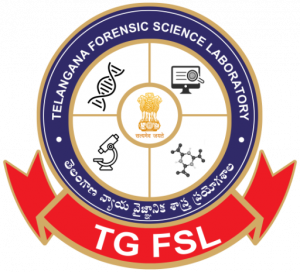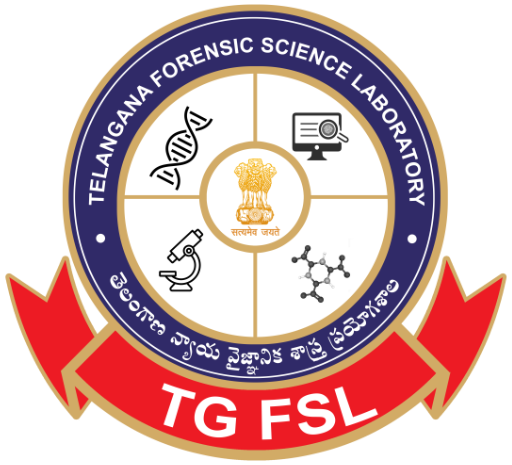Our Divisions
Our Main Forensic Divisions at TGFSL
The Telangana State Forensic Science Laboratory operates various divisions that specialize in conducting examinations on a diverse array of crime exhibits. These divisions encompass a wide range of expertise and include:
In the Telangana State Forensic Science Laboratory, there are four divisions: the Physical/General division, which includes Ballistics, Documents, and Physics sections; the Chemical division, comprising Toxicology, Narcotics, Excise, Chemistry, and Explosives; the Biology/Serology division, encompassing Biology, Serology, DNA, and Lie Detection; and the Computers Division, which includes Forensic Audio, Video, and Computers. It’s important to note that the nature and count of these divisions may undergo changes over time due to evolving crime trends and investigative technologies.
Functioning of FSL
- Biology Section deals with examination of Hair and Fibres for their origin, individualization and comparison; diatoms to confirm drowning by death; Insects, flies and maggots for ascertaining time and place of death and other biological materials of plant origin for determining the origin and species etc.
- DNA Fingerprinting section examines blood, blood stains, seminal swabs, skeletal remains, hair and saliva etc., to identify and individualize persons and also materials of animal and plant origin for identification of species.
- Serology Section undertakes examination of blood, semen, saliva and other body fluids on clothes and other surfaces to ascertain origin and group of blood.
- Polygraph Section examines subjects viz., suspects, witnesses and complainants to ascertain whether the statements given by them are true or false in order to establish or eliminate the involvement of accused in criminal offences. Polygraph or Lie – Detector instrument is used for this purpose (consent of the person who is subjected to polygraph test is necessary).
- Chemistry Section deals with examination of remnants of explosives to ascertain the nature of explosives; petrol, diesel etc. to detect adulteration and its extent and other chemical products for qualitative and quantitative analysis.
- Narcotics Section deals with analysis of suspected powders, liquids and unknown substances for identification of narcotic substances which come under the purview of NDPS Act; toddy / liquor to establish adulteration and its quantity and to detect poisonous substances and its quantity in adulterated toddy / liquor.
- Toxicology Section deals with analysis of viscera and body fluids to determine the nature, composition and quantity of poisons, and bone ash, vomit and exhumed material and any other substances and objects like needles and syringes, powders etc., for detection and estimation of poisonous substances.
- Computer Forensics Section deals with examination of computers and its components to restore erased information and also to ascertain the authenticity of software and other computer products, and deals with examination of cases of computer crimes enlisted in Information Technology Act, 2000/2008.
- Forensic Engineering Section undertakes examination of building materials such as bricks, cement, mortar, steel etc. for their strength and specifications, and also mechanical, electrical and electronic products for their authenticity.
- Physics Section undertakes examination of counterfeit coins, currency, erased numbers in stolen vehicles for restoration, glass, paint chips etc. in hit and run accident cases and of spurious articles to establish infringement of Trade Mark Act. The section also under takes voice analysis to link suspects to crime.
- Ballistics Section deals with examination of firearms, cartridges, cartridge cases, bullets and other discharged firearm materials and affected surfaces to ascertain the nature of firearm, caliber and also to establish the range, direction of firing, number of shots in cases of shooting by firearms and conducts examination of cases under Arms Act.
- Documents Section undertakes examination of various kinds of questioned documents to ascertain whether they are genuine or forged, by analysis of signatures, initials, handwriting and also to establish authorship of writings and signatures. The section also establishes the nature of tampering in documents viz., alterations, erasures and obliteration. Type writing is also examined for identification of typewriter.









